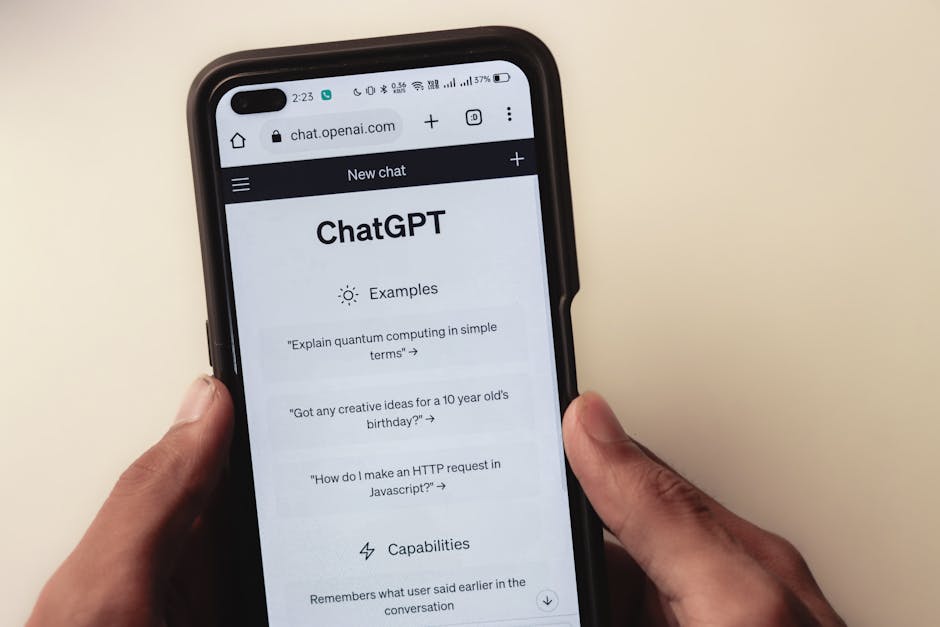The Foundation: Microsoft‘s Unshakable Enterprise Dominance
In the world of enterprise technology, Microsoft isn’t just a player; it’s the stadium, the league, and the reigning champion all rolled into one. With its Windows operating system and Microsoft 365 suite embedded in the DNA of global corporations, the tech behemoth has an unparalleled foothold in the modern workplace. So, when Microsoft announced Copilot, its AI-powered assistant designed to be your “everyday AI companion,” the path to victory seemed pre-paved.
The strategy is brilliant in its simplicity: integrate a powerful generative AI, backed by a multi-billion-dollar investment in OpenAI, directly into the tools that billions already use daily—Word, Excel, Teams, and Outlook. With this colossal distribution advantage, user acquisition shouldn’t be an issue. But as the initial hype settles, a more complex reality shows that Microsoft faces an uphill climb to turn enterprise dominance into widespread AI chatbot adoption. Owning the desktop is one thing; winning the battle for daily user engagement is another.
Hurdle 1: The High Price of Productivity
The first major obstacle is the cost-to-value proposition. At roughly $30 per user per month for its enterprise-grade Copilot, Microsoft is asking companies to make a significant additional investment. For a large company with 10,000 employees, that’s a potential $300,000 monthly expenditure.
CIOs and business leaders are rightfully asking: what is the tangible return on this investment? While Copilot can draft emails, summarize meetings, and create PowerPoint presentations, the productivity gains are not yet consistently jaw-dropping for every employee. For many, it remains a powerful “nice-to-have” rather than an indispensable “must-have,” making widespread adoption a tough sell.
Hurdle 2: The Challenge of Breaking Ingrained Habits
Secondly, there is the deeply entrenched barrier of human habit. Professionals have spent decades perfecting their workflows within Microsoft’s ecosystem. We know the shortcuts in Excel and the quickest way to schedule a meeting in Outlook. Changing these ingrained behaviours requires a fundamental mental shift.
For AI adoption to become widespread, users must learn to stop and think to ask Copilot for help, rather than instinctively doing the task themselves. This “prompt-first” mindset isn’t natural for most. Without a concerted effort in training and a consistently superior result from the AI, many users will simply revert to their old, familiar ways, slowing the march toward mass adoption.
Hurdle 3: The Performance and Trust Paradox
While incredibly capable, AI is not infallible. An incorrectly summarized meeting or a “hallucinated” fact in a research draft can do more than cause a minor inconvenience; it can erode trust. In the consumer world, a quirky chatbot answer is amusing. In a corporate environment, where accuracy is paramount, a single significant error can lead to an employee sidelining the tool indefinitely.
The reliability of Copilot must be near-perfect to justify its premium price and overcome user skepticism. This performance paradox is a critical part of Microsoft‘s uphill climb.
Hurdle 4: A Crowded and Competitive Landscape
Finally, the competitive field is heating up. Google is aggressively integrating its Gemini AI into its Workspace suite, offering a compelling alternative for millions of businesses. Furthermore, a swarm of specialised AI startups are targeting niche enterprise functions, from legal contract analysis to software coding, sometimes offering more focused and effective solutions than Microsoft’s jack-of-all-trades approach. This competition means Microsoft‘s enterprise dominance doesn’t guarantee a win in the AI chatbot space.
The Road Ahead for Microsoft‘s AI Ambitions
Microsoft’s position is undeniably powerful. It has the distribution channels, enterprise trust, and deep data integration to make Copilot an integral part of our work lives. However, the road from enterprise presence to ubiquitous AI adoption is paved with challenges. To conquer this hill, Microsoft must do more than just bundle a chatbot into its software; it must prove indispensable value, break decades of user habits, and deliver flawless performance, one prompt at a time.




